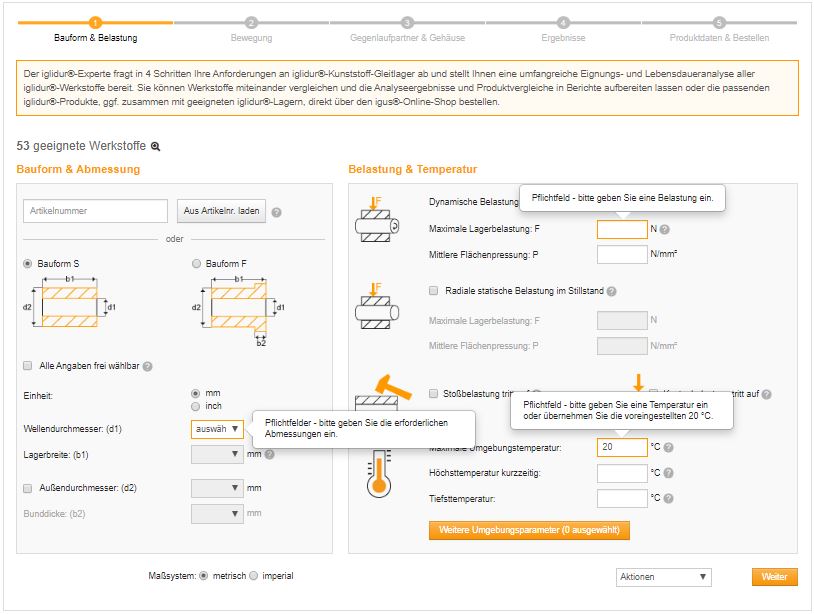Three key technical indicators that should always be considered during bearing selection
Lars Butenschön | 19. March 2020
Only one short work step left … and then it happens. The device refuses to work. The knee lever seizes, and the machine performs an emergency stop. The user has just one concern: “How long does the service technician need?” “Why can’t this piece of junk keep it together until I’m done with this urgent order?” “Can I take it apart myself?” A few minutes later, whether a technician has shown up quickly or the user has enough mechanical expertise, a deformed piece of plain bearing is lying next to an equally deformed bearing pin. And this all happens at the tail end of a late shift. Great. Who failed to pay attention when the bearings were being selected?

Hindsight is 20/20 – the pitfalls of bearing selection
The correct design and analysis of a bearing point and the subsequent bearing selection is a balancing act. On the one hand, various movement processes and applied forces can be calculated ahead of time, but on the other, the cost and effort of doing all the analysis and calculation mounts quickly. Fortunately, a number of factors do not require great precision or are covered by safety factors. But which ones are critical for the application I’m concerned with? And even if I use the data sheets to establish basic suitability, what does that tell me about the bearing’s service life in my application? One orientation aid here is the pv value. Is the value determined in the application lower than the maximum permissible value for the bearing? Then everything’s great! Or is it?
The pv value: what exactly is it made up of?
The so-called pv value is the instrument of choice for bearing selection. Without going on about this value at great length (something I’ve already done in this post, for instance), the pv value is supposed to say something about the plain bearing’s ability to dissipate heat generated by movement. If the pv value generated in the application (movement x speed) is greater than the bearing’s pv value (its ability to dissipate heat), the bearing will continue to heat up until it fails. There is a bit more to it than that, of course, but that should be enough to get us to the first two of the key indicators I mentioned at the beginning: load and speed. How do we get to Number 3?
Cologne or Furnace Creek? And what does that have to do with bearing selection?
If it were not too much to expect me to bike to work in the first place, I would probably make my decision dependent on the length of travel, altitude and climate. Furnace Creek in Death Valley, California is the hottest place in the world (above 56 °C). Even if I were highly motivated, 10km by bike under these conditions would probably be unrealistic. This image may be far-fetched, but it is intended to illustrate the following: the ambient temperature is no less important than the other two values. The design engineer for the machine mentioned at the beginning should have taken into account the fact that the knee lever is positioned right next to the mouth of an oven. “But that’s far enough away … What would that be? Maybe fifty degrees …”, but it turned out to be a bit hotter. In fact, it was 75°C, enough to move the bearing’s pv value down far enough that its heat dissipation wasn’t enough after all. The result is increased wear.

Play it safe
There are other indicators besides the three named (ambient temperature, speed and load). There is shaft roughness, duty cycle and many more. And it would also be interesting to answer not only “What can the bearing take?”, but also “How long can the bearing take it?” This can be calculated nicely. But only practical implementation can deliver a precise answer. igus tests and documents the wear behaviour of its plain bearing materials on 300 test stands in more than 10,000 tests each year. The combined data is used in various iglidur service life expert algorithms. This practical tool can be used to calculate the service life of polymer bearings used in a wide variety of applications – free of charge. Even for bottom bracket bearings in Death Valley or knee levers near ovens.
